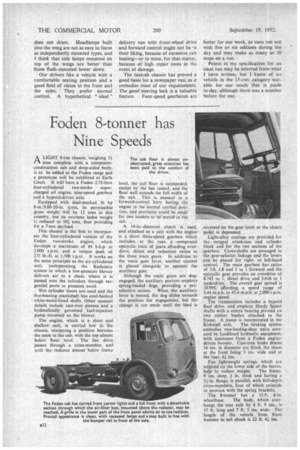Increased Longevity
Page 65

Page 66

If you've noticed an error in this article please click here to report it so we can fix it.
By L. G. Sewell 0UR fleet of some 200 delivery
vans contains vehicles ranging in capacity from 5 cwt. to 5 tons. Only about two dozen pre-war models remain. To make comparisons between old and new types, I would say that, pre-war machines were more serviceable than those built tolday. '
Although there have been improvement$ in design so far as braking, rear lighting and petrol .consumption
are concerned, modern vehicles do not afford good accessibility for the engine fitter. Whilst radiators are well protected behind grilles, they are difficult to remove.Remotecontrol gear-change mechanisms are not sufficiently robust to withstand abuse.
My chief bone of contention relates to wiring, in which there has been no improvement for many years. Leads are still run in places' exposed to contamination by oil and dirt and to the effects of the weather.
Although I do not object to those types of van which are variants of private-car designs, I do not consider that independent front suspension is necessary for a commercial vehicle, as it involves heavy tyre wear. The beam front axle is more satisfactory. Moreover, the type of fully floating rear axle fitted to pre-war vans afforded rapid replacement of driving, shafts whenever necessary.
One modification we make to our vehicles is to take the exhaust pipe to the off side. When a van is being driven with its back open, fumes are drawn inside if the exhaust efflux is at the rear, as it is with most types. prefer the composite body to the all-metal, because it is stronger, less expensive to repair and, of course, B31
does not drum. Headlamps built into the wing are not as easy to focus as independently mounted types, and I think that side lamps mounted on top of the wings are better than those flush-mounted lower down.
Our drivers like a vehicle with a comfortable seating position and a good field of vision to the front and the sides. They prefer normal control. A hypothetical " ideal " delivery van with front-wheel drive and forward control might not be "o their liking, because of excessive cab heating—or to mine, for that matter, because of high repair costs in the event of damage.
The taxicab chassis has proved a good basis for a newspaper van, as it embodies most of our requirements. The good steering lock is a valuable feature. Four-speed gearboxes are better for our work, as vans run out with five or six editions during the day and may make as many as 50 stops on a run. Points in my specification for an ideal van may be inferred from what I have written, but I know of no vehicle in the 15-cwt. category suitable for our needs that is made to-day, although there was a number before the war.




































































































































































